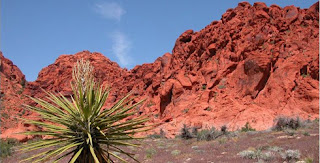 |
| "Red Rock Quiet" 9x12, oil - Zion National Park |
Students ask me how to price their paintings. When I first started out, I didn't have any idea, either. What was a reasonable price for a 9x12 pastel - a hundred bucks? A thousand? Judging from some of the prices I'd seen in galleries, it seemed like the range was pretty wide, and price didn't necessarily relate to the quality of the work or the artist's reputation.
My mentor, Ann Templeton, introduced me to her gallery in Ruidoso, New Mexico. The owner liked my work, and I liked the gallery. So, I asked her what she thought she could get for my 9x12 pastels. She named a price - $300 - and so that's where I started. Since that time, I've raised my prices annually if things were selling, and kept them the same if they weren't. (I have yet to drop the price.) It's been a good policy, and I think my work today commands what I consider a fair price.
Whenever I go to a new area looking for a gallery, my procedure is to ask what they think they could get for my work. Sometimes it's higher than what similar work is priced somewhere else. And that's okay. I know the received wisdom is that prices should be the same across all galleries, but I disagree. The price is whatever the market will bear. Some galleries have access to a wealthy clientele; some don't.
As for different sizes, I price by the square inch, but as the number of square inches increases, the price per square inch drops. Bigger paintings cost less per square inch than smaller ones. I built a little spreadsheet that does all the calculations for me. One important thing to take into account is to make sure you consider framing and the gallery's commission. If you charge $500 for a painting, your gallery will take $250 (if you have a 50/50 deal), and if the framing cost $100, that will leave you with only $150. If you're shipping work to an exhibition, make sure you take shipping into account, too, as it can eat up your profits.
Sometimes I'll offer sketches and demonstration pieces for sale. These I price lower, since they are often unframed and, well, sketches and not finished work. I price them reasonably, keeping in mind that often these go to students or to people who'd like a piece of original art but just can't afford a finished piece.
There are many ways to price artwork, and this is just what works for me. Check with other artists to see how they price things and what their philosophies are. The bottom line is, if you're trying to make a living at this, you want to get paid a reasonable rate for your work - and to make sure it gets out the door at whatever price. (Click here to see more of my plein air landscapes.)
How do you price your work?






































